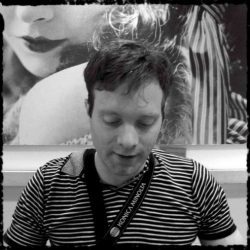
Architecture is nothing then a cultural construction, everything else besides that is not much more then a pile of bricks and mortar…
They ask: “can one call himself an architect if one actually never built anything in real?“
Counter question: “Can one call himself an architect when he never really dreamt about Architecture? Does one dare to define great architecture as an extraordinary way of living in incredible spaces? Does architecture mean just following common acceptance that manifests in the clients thinking, a kind of “architectural common sense”, (consisting of petty bourgeois stereotypes, as well as a so-called economical and fonctional austerity, and similar scientific approaches.) Then a building engineer and a project manager is needed and will fullfill their missions better than any good architect.”
Reactionary people, that are shaming creativity of others in this way, generally, themselves live in the most loveless and banal dwellings, reflection of their own emptiness and boredom. Then, very often, they add superficial anecdotes to the building to mask the inherent lack of meaning and value. The creativity, the “will to shape,” than only makes use of stucked and prescribed architectural language, and is conforming to the commonly accepted instead of touching the spectator more profoundly, or it can even by the consumption of ready-made building ideas, building materials or parts.
A heroic and persistently pursued dream, that defies dominant culture, is the theme of 2018’s biographical movie L’incroyable Histoire du facteur Cheval. Where Ferdinand Cheval bespite all painfull life experiences pursues the building of his own dream temple with, let us admit, a proper shot of “obsession”- le Palais idéal, (that against all immediate irritations later became even famous through the entire world and still can be visited in the village of Hauterives, departement Drôme).
On one hand, the technocratic, ecomomically driven, often over-regulated world of building constructions makes the architect’s dream harder to realize, or it often disappears entirely. But, on the other hand, technologies like virtual 3D can make dreaming itself actually even more fascinating and persuasive than ever before.
Also the non negelectable carbon footprint of any building activity became a very important point of consideration in recent years. At this stage, also considering the immense competitive presssure amoung the numerous young architects, it might be actually more ecological and ethical to just dream about architecture then putting it into real concrete and steel.
New computerized and robotized approaches opened the field of possibilites of real world architecture, as well its virtual counterpart: architectural dreaming, to new innovative shapes, self-references and subjectivity (communicating through inter-subjectivity), spatial complexity, a formerly unknown structural intricacy…
But hopefully these technologies will also improve and optimize the use of materials and ressources, and help to avoid exploitation of human labour from around the globe.
Neverless recent works of star architects around the world have shown that architecture has detached itself from the paradigms of modernity a long time ago. It also overcame post-modern approaches, to finally reach a new caracterisitc: architecture can become spectacular, and hence creates a new kind of “market value”. The city of Bilbao, its inhabitants were outraged about a new project, critizied the amounts that where spent on it, but the course of things made this particular project now the center of attraction of Bilbao, and added immensily to the charisma of the city. Nevertheless this has been only achieved through exceptional quality.

